Please refer to my answer to your previous question on the subject:
- If your recording device is high impedance relative to 600 Ohms it has no significant impact on impedance matching for the existing output source or your headphones, the impedance stays matched. This is easily achieved by using a voltage follower as buffer on the recording device, if its impedance is not high enough (anything over 6 kOhms will ensure less than 10% attenuation). Most recording devices will already cover this.
Having said that, all you absolutely need to make a splitter for splicing in the recorder is two 3.5 mm connectors (one male and one female), and one connector for the recording device. The recording device connector is spliced in, in parallel to the wires to your splitter's headphone socket.
As previously suggested, you would need to measure the actual signal voltage carried on the headphone cable - "a very high voltage" is rather unlikely in a headphone connection. Once that voltage is determined, you can add a suitable voltage divider to the signal line going to the recording device, to bring the signal down to a required voltage level, if needed.
Adding a resistor, say 6.8 kOhms or higher, in series with the signal line on the recording device connector's wire pair will add a safety element, in that even if the recording device becomes a short circuit for some reason, there will not be perceptible attenuation on the headset, and the output device will not be harmed. This series resistor can well be part of the voltage divider suggested above, if the divider is required at all.

simulate this circuit – Schematic created using CircuitLab
This will of course reduce the signal strength reaching the recording device, but whether that attenuation leaves you with a usable signal is best determined by experimenting.
The above example schematic attenuates a 24 Volt peak to peak signal to 2 Volts peak to peak for the recorder - if those are what the output device generates and what the recording device needs, you're all set.
So in short, you really do not need a special purpose splitter, unless you want the pre-packaged goodness and the convenience of a coiled wire, all done for you.
